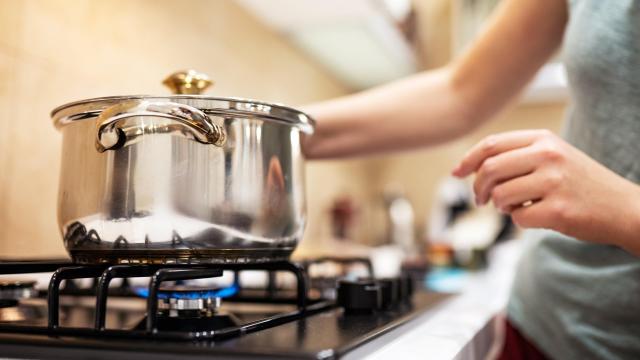I’ve always cooked on gas ranges. I grew up in a house with a gas stove, I have one in my current house, and I remember the electric-only apartments of my young adulthood with disgust. I will complain about them at length, don’t get me started. But evidence has been mounting that gas stoves and ovens cause enough indoor air pollution that they may be worsening kids’ asthma.
That caught my attention, because I have a gas stove and asthma. I can say the same of several family members. That could be a coincidence; about 8% of the U.S. population has asthma, and a third of American households cook with gas. But then again, there is evidence that suggests gas stoves are one of the pollutants that can contribute to asthma flare-ups. Vox has a thorough rundown of the evidence here, which is worth reading if you’re concerned.
Interpreting that evidence is a bit tricky. Asthma severity is higher in homes with more nitrogen dioxide in the air, and gas stoves are a major source of indoor nitrogen dioxide. But asthma is also worse in kids who grow up in lower-income families, who also tend to be in neighbourhoods that have more outdoor air pollution. Importantly, access to health care and to asthma medication also vary with income level, and studies like this one have found that the effects of nitrogen dioxide on asthma look a lot smaller when you take those factors into account.
All that said — we’re now arguing about how bad gas stoves are for health, not about whether they’re bad. If you’re building or buying a house, and you want to make good choices for your health, an electric or induction range would be the better pick. Electric stoves kind of suck, but they’re not so bad once you get the hang of cooking with them. Induction cooktops are expensive, but by all accounts they’re pretty great to cook with. (Induction is the kind where the cooktop itself doesn’t heat up; instead, a coil induces your cast iron or stainless steel pan to heat up.)
What to do if you have a gas stove
The best way to reduce the indoor pollution from gas ranges is to get serious about ventilation. Strangely, even though gas dryers and furnaces are required to vent to outdoors, gas stoves are often not.
So first, figure out if your range hood actually vents to the outside. A good one will have a vent that runs through a wall or up a chimney. A crappy one will just recirculate the air, essentially sucking it up from the stovetop area and blowing it out right over your head.
If you do have a good range hood, you can make sure it captures the most of the pollutants by cooking on the back burners, and by turning the fan to its highest setting when you’re cooking on the front burners, using multiple burners, or frying anything.
If your range hood is the recirculating kind, create ventilation in another way if you can. Opening a window is one solution you can use when the weather is good. It’s possible to install an exhaust fan directly into an exterior wall, which can help to ventilate the kitchen while you’re cooking. (If your kitchen is near a bathroom, turning on the bathroom fan may help a little bit.)
Range hoods and fans can be loud and annoying, so if you’re looking to upgrade your kitchen but can’t swing a replacement stove, it may be worth looking into a range hood that is quieter (so you’ll use it more often) and/or moves more air (to remove more pollutants when it’s in use).
It’s also important to remember that while gas stoves create more indoor air pollution than other stoves, cooking, just in general, creates particulates and sends volatile compounds into the air. So ventilation is a good idea no matter what kind of stove you use.

Leave a Reply
You must be logged in to post a comment.